William Hall, 21 Argyle St., 1880 - 1901
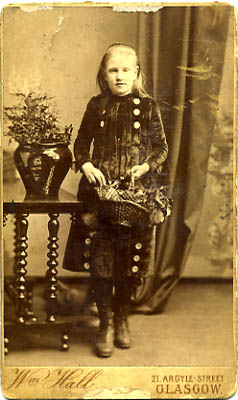
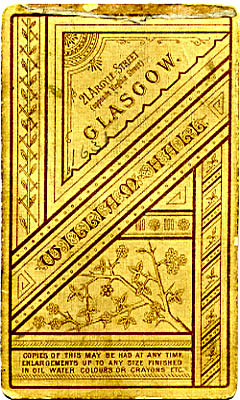


The design on the back of the card above would suggest a date in the early 1880s, and the low negative number (1631, written on the back) would again suggest early rather than late. ( taking only 5 exposures a day, 1631 would be reached in 18 months.)
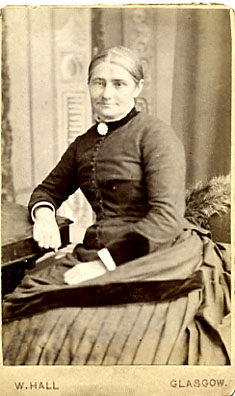
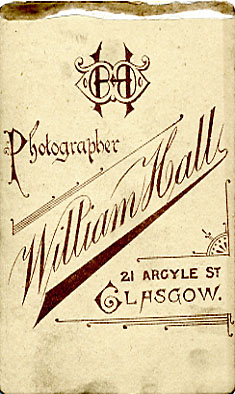
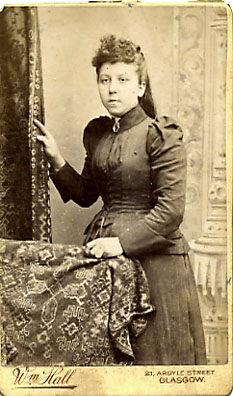
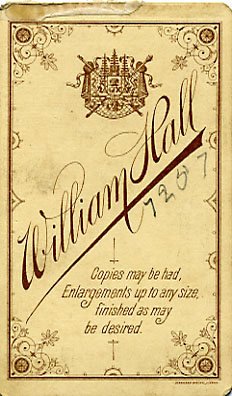
By a similar argument, the second cdv above numbered 7257 would come from the mid 1880s. The font used on the front for the name seems similar to that used on the card above. However, the backdrop, stance and costume seem similar to the tissued cdv below on the left, which was dated to the early 1890s. The dates of both of the above are in doubt.
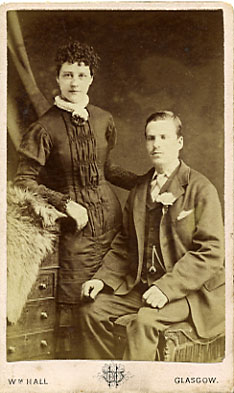
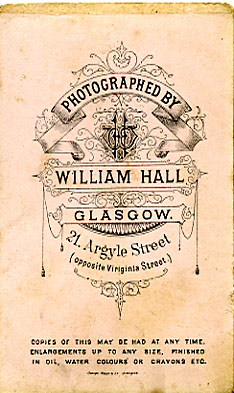
The text on the front of the cdv above and the cabinet card below suggest they are of similar date, and the form of the printer's name at the bottom of the back of the cdv has been provisionally dated to around 1884. (See section on the printer George Mason) The back of the cabinet card is blank.

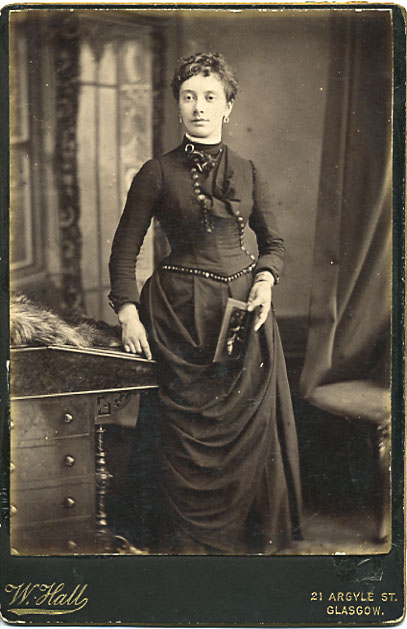
The type of cabinet card above, with the gilt and bevelled edge, and the thick emulsion paper separating from the card at the edges, is common after 1885, and the fashions shown support a date in the mid to late 1880s. The fonts used are identical to those used below.
The first of the two cdvs below, both with thick self-coloured gilt edged card, is probably from the late 1880s, and the second, showing peaked shoulders, from the early 1890s.
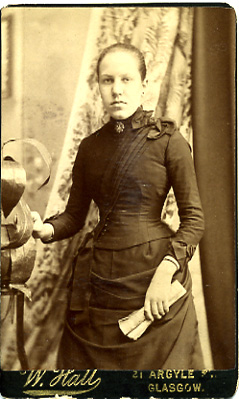
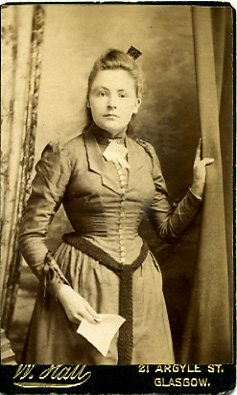
The protective tissue has been preserved on the two cards below. These are also gilt and square edged, blank on the back, and showing the same costume feature, also from the 1890s.
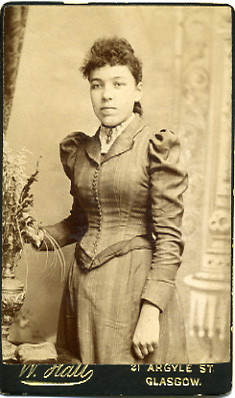
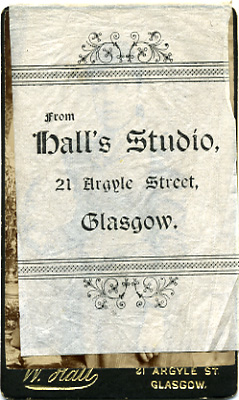
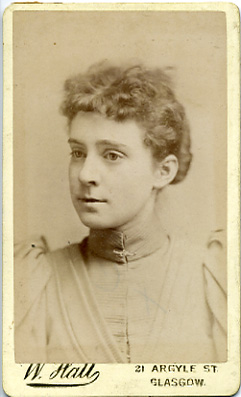
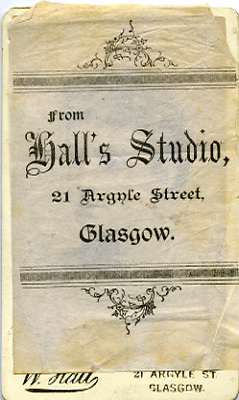
The cdv below, showing a slightly sinister man with gloved hand, is on a similar card thickness to those above, though with a bevelled edge. It has a thicker, more highly glossed print attached, separating at the edges, which suggests some version of the chromotype process was used. It is possibly from the mid 1890s, though chromotype patents were awarded, for example to Annan, as early as 1877.